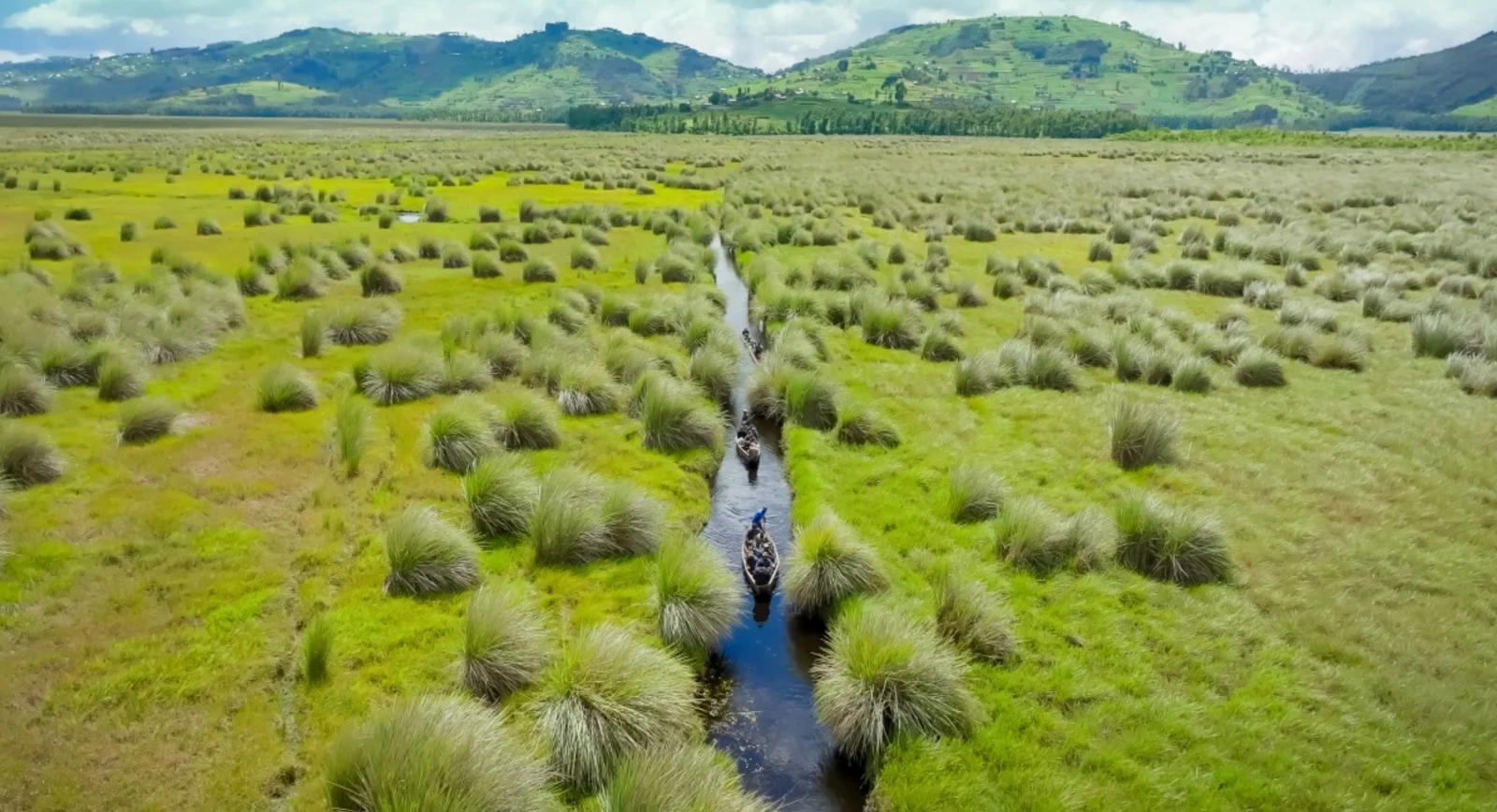On a warm September afternoon in Kigali, conservationists, government officials, and curious onlookers gathered at Canal Olympia for the unveiling of the groundbreaking findings from Rwanda’s first comprehensive biodiversity survey of Rugezi Marsh.
The event, aptly named “Rugezi Marsh Unveiled,” was not only a celebration of the discoveries made in this Ramsar-protected wetland but also a call to action for the future of Rwanda’s conservation efforts.
As the lights dimmed, the audience was transported to the heart of Rugezi Marsh through the lens of Rwandan filmmaker James Rooney Dukundane. His documentary, premiering for the first time, captured the breathtaking beauty of the marsh and the tireless efforts of the researchers who spent weeks exploring its every corner. From sunrise treks through dewy grasses to nocturnal observations of elusive creatures, the film brought to life the vibrant biodiversity hidden within the marsh’s borders.
But the story of Rugezi Marsh didn’t end with the film. After the screening, a panel of Rwandan researchers who led the survey took to the stage, offering deeper insights into their findings. Their voices, filled with a mix of excitement and urgency, conveyed a profound truth: Rugezi Marsh is far more than just a wetland – it’s a biodiversity hotspot teeming with life that demands protection.
The research, conducted in collaboration with the Rwanda Wildlife Conservation Association (RWCA) and the Rwanda Environment Management Authority (REMA), marked a significant milestone for conservation in Rwanda. In 2023, a dedicated team of researchers from Rwanda and East Africa embarked on a comprehensive biodiversity survey of Rugezi Marsh, with data collected during both dry and rainy seasons to ensure a thorough understanding of the ecosystem. Their efforts revealed astonishing results – a total of 638 species were documented, including 433 that had never been recorded at Rugezi Marsh before.
Among the most remarkable discoveries were two species never previously recorded in Rwanda: the Hydrilla Leafcutter Moth (Parapoynx diminutalis) and a rare climbing plant (Zehneria tridactyla). These findings, alongside the identification of nine globally threatened species and 14 endemic to the Albertine Rift, highlighted the critical importance of this site for global biodiversity.
“Rugezi Marsh is not just a wetland; it’s a living testament to the resilience of nature,” said Olivier Nsengimana, Founder and Executive Director of RWCA. “This research establishes a baseline for monitoring the species and ecosystems here, guiding future conservation actions.”
The survey’s results spanned a variety of species groups, from plants and amphibians to birds and mammals. For instance, 127 bird species were recorded, with 28 newly documented for the marsh. Among them was the Vulnerable Albertine Rift Endemic Grauer’s Swamp Warbler (Bradypterus graueri), a rare bird whose presence underscores the marsh’s significance as a refuge for threatened species.

Meanwhile, 53 mammal species were recorded, including 22 bat species – an astonishing 40% of all known bat species in Rwanda. Among the notable finds was Harrison’s giant mastiff bat (Otomops harrisoni), classified as Vulnerable on the IUCN Red List, as well as two otter species and Delany’s swamp mouse, all contributing to the marsh’s rich mammalian diversity.
The event also shed light on concerning findings, such as the absence of certain papyrus-dependent species like the Papyrus Canary and the White-winged Swamp Warbler, which were once known to inhabit Rugezi Marsh. The researchers emphasized the importance of protecting the marsh’s papyrus stands, which are essential for the survival of these species.
As the evening unfolded, the excitement surrounding the discoveries was tempered by the understanding that much work remains to be done. RWCA’s commitment to further data analysis, alongside ongoing conservation efforts, promises to deepen understanding of Rugezi Marsh’s ecosystem. Moreover, advanced molecular techniques are expected to reveal even more species and provide the first validated gene sequence records for several organisms, potentially uncovering new species along the way.
“We are thrilled by the discoveries made during this survey,” said Juliet Kabera, Director General of REMA. “This knowledge strengthens our commitment to protecting Rugezi Marsh for future generations. When nature thrives, so do we.”

As the audience left the event, the message was clear: protecting Rugezi Marsh is not just about preserving a wetland; it’s about safeguarding a unique ecosystem that is integral to Rwanda’s natural heritage. For the researchers, conservationists, and government officials in attendance, the evening was a reminder that Rwanda’s biodiversity is both a source of national pride and a responsibility shared by all.
With the preliminary findings now public, the future of Rugezi Marsh looks brighter than ever. The data gathered from the survey will serve as a critical tool for shaping conservation strategies and promoting sustainable management of this precious wetland. And as more discoveries are made in the coming months, the story of Rugezi Marsh will continue to unfold, showcasing the incredible biodiversity hidden within its waters and grasslands.
As Olivier Nsengimana poignantly noted during the panel discussion, “Protecting Rugezi Marsh is not just an environmental issue – it’s a matter of national importance. This unique ecosystem holds the key to understanding our natural world and our role in protecting it.”

